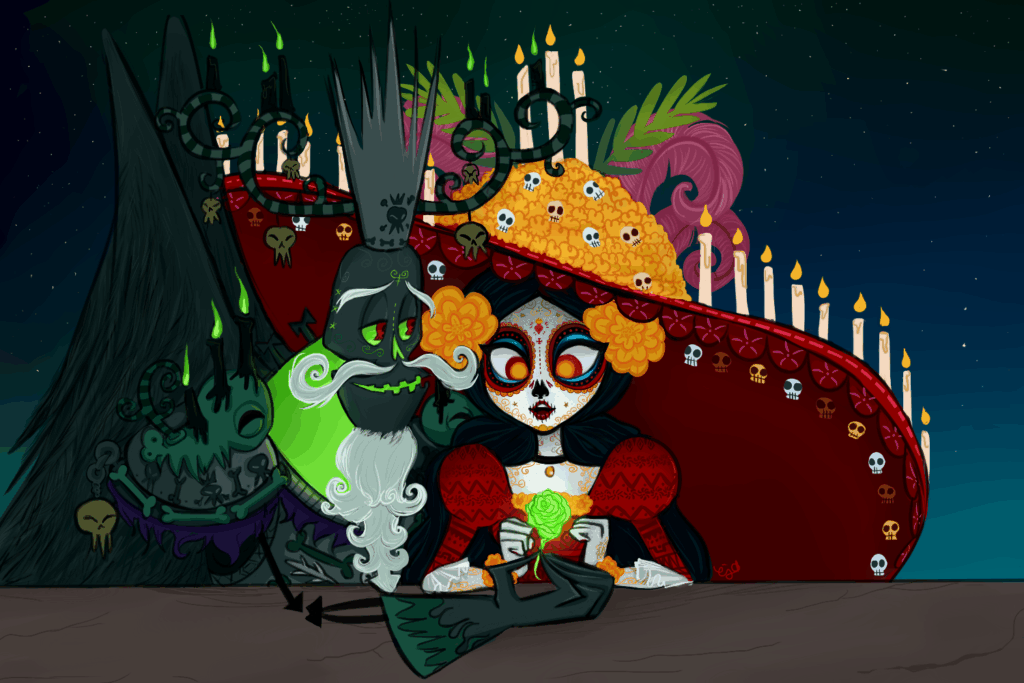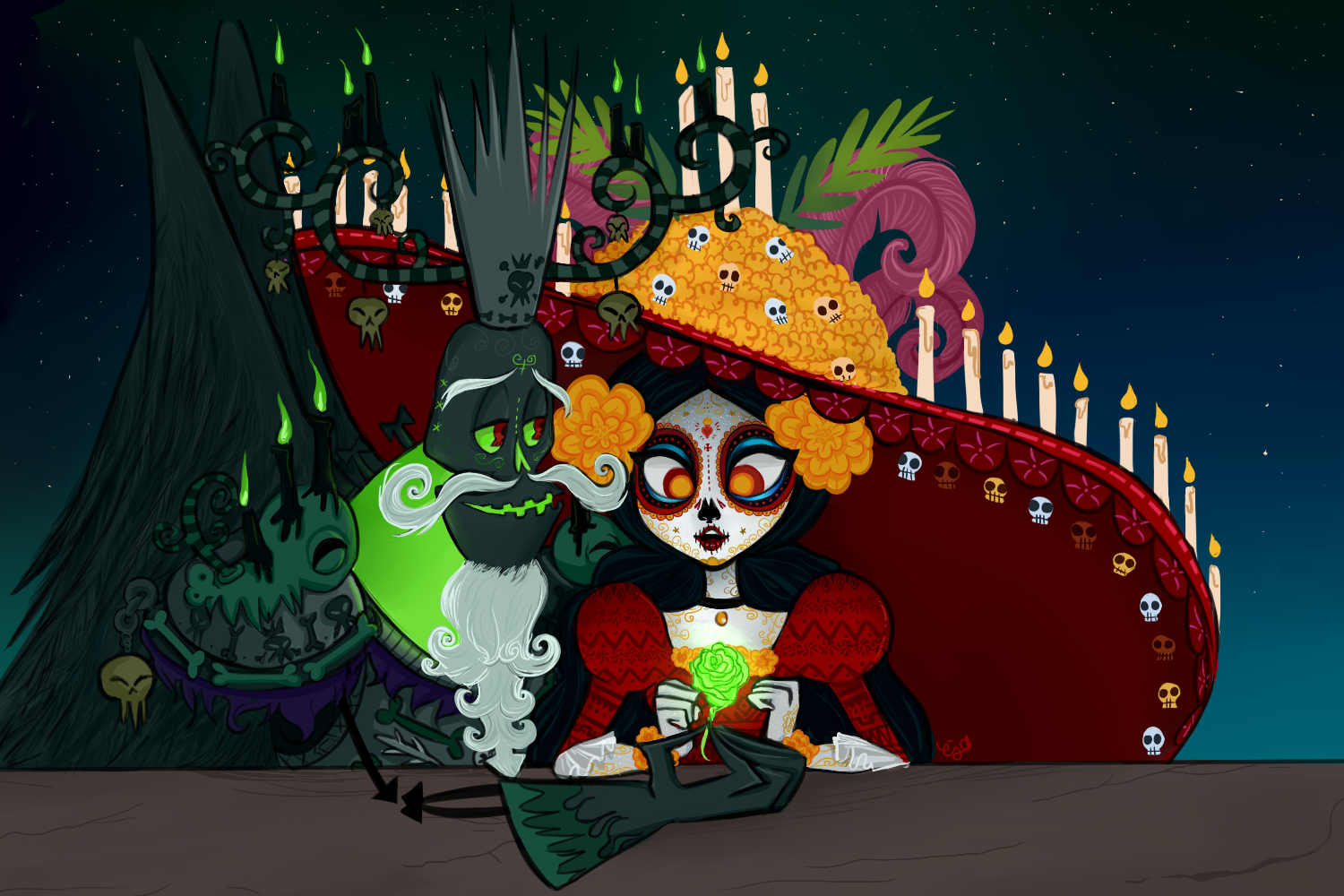
The Book of Life: Unveiling La Muerte’s Mystical Composition
Guillermo del Toro’s animated masterpiece, *The Book of Life*, is a vibrant celebration of Mexican culture, particularly the Day of the Dead. At the heart of this fantastical world lies La Muerte, the benevolent ruler of the Land of the Remembered. But what exactly is La Muerte made of? This question delves into the deeper themes of the film, exploring concepts of memory, love, and the enduring power of stories. Understanding the essence of La Muerte provides valuable insight into the film’s message and its cultural significance. In this article, we will explore the artistic and thematic elements that contribute to La Muerte’s character and her composition within the narrative of *The Book of Life*.
The Essence of Remembrance: La Muerte’s Core
La Muerte’s very being is intrinsically linked to remembrance. She draws her power and existence from the memories and love that mortals hold for their deceased loved ones. In *The Book of Life*, she represents the positive and joyful aspects of death, contrasting with Xibalba’s fear-mongering approach. Her radiant appearance, adorned with candles and flowers, symbolizes the vibrant and celebratory nature of the Day of the Dead. This holiday isn’t about mourning; it’s about honoring and remembering those who have passed, keeping their spirits alive through shared memories and traditions.
The more people remember and celebrate the lives of the departed, the stronger La Muerte becomes. This concept highlights the profound impact of memory on our understanding of life and death. It suggests that death isn’t an end but rather a transformation, a continuation of existence in the collective memory of those who remain. La Muerte embodies this idea, serving as a reminder that love and remembrance transcend the boundaries of mortality.
Visual Representation: Symbols and Imagery
The visual design of La Muerte in *The Book of Life* is rich with symbolism. Her attire is a vibrant tapestry of Mexican folk art, reflecting the cultural heritage of the Day of the Dead. Her face is painted with the traditional sugar skull makeup, a common motif during the holiday. This makeup isn’t meant to be macabre; it’s a way of honoring the deceased and celebrating their lives. The intricate patterns and bright colors represent the joy and vibrancy that should be associated with remembrance.
The candles that adorn her represent the light of remembrance, guiding the spirits of the deceased back to the land of the living during the Day of the Dead. The flowers, particularly marigolds (cempasúchil), are traditionally used to decorate altars and graves, their vibrant color and scent believed to attract the spirits of the dead. These visual elements combine to create a powerful and evocative representation of La Muerte’s role as the guardian of the Land of the Remembered and the embodiment of joyful remembrance. The visual aspects of *The Book of Life* are essential to understanding the themes.
The Power of Belief: Faith and La Muerte
In *The Book of Life*, the power of belief plays a crucial role in the existence of the deities. La Muerte’s strength is directly proportional to the faith and love that mortals have for their deceased. This concept underscores the importance of cultural traditions and rituals in maintaining a connection with the past. When people cease to remember or honor their ancestors, the Land of the Remembered weakens, and La Muerte’s power diminishes. This highlights the responsibility that each generation has to preserve and pass on the stories and traditions of their ancestors.
The film subtly suggests that the gods, including La Muerte, are not simply supernatural beings but rather embodiments of collective human beliefs and values. They are manifestations of our deepest hopes and fears, our love for family and tradition, and our desire to transcend mortality. By emphasizing the power of belief, *The Book of Life* encourages viewers to reflect on the values that shape their own lives and the importance of preserving cultural heritage. The core narrative of *The Book of Life* revolves around these beliefs.
Love and Compassion: La Muerte’s Moral Compass
Beyond remembrance, La Muerte is also defined by her love and compassion. She is a benevolent ruler who cares deeply for the souls in her realm. She acts as a guide and protector, ensuring that the spirits of the remembered are treated with respect and dignity. Her compassion extends to the living as well, as demonstrated by her willingness to wager with Xibalba on the outcome of Manolo’s fate. This wager reveals her belief in the power of love and the potential for even the most flawed individuals to find redemption. The story in *The Book of Life* is about that redemption.
La Muerte’s unwavering belief in love and her compassionate nature serve as a moral compass for the film. She embodies the positive values that the film seeks to promote, such as kindness, empathy, and the importance of fighting for what is right. Her character provides a counterpoint to Xibalba’s cynicism and self-serving behavior, highlighting the importance of choosing love over fear and compassion over greed. The contrasting characters in *The Book of Life* emphasizes this.
The Contrast with Xibalba: Duality and Balance
The dynamic between La Muerte and Xibalba is central to the narrative of *The Book of Life*. They represent opposing forces: remembrance versus fear, love versus cynicism, and celebration versus despair. While La Muerte embodies the positive aspects of death, Xibalba thrives on fear and forgetfulness. Their contrasting personalities and ideologies create a sense of balance within the film’s universe, highlighting the duality of life and death. This duality is a key theme within *The Book of Life*.
Their constant rivalry and wagers provide a framework for the film’s plot, driving the story forward and challenging the characters to confront their own beliefs and values. Ultimately, the conflict between La Muerte and Xibalba underscores the importance of choosing love and remembrance over fear and forgetfulness. It suggests that the way we approach death reflects the way we approach life, and that embracing the positive aspects of remembrance can lead to a more meaningful and fulfilling existence. The way the characters interact in *The Book of Life* is critical.
La Muerte’s Role in the Narrative: A Guiding Force
Throughout *The Book of Life*, La Muerte serves as a guiding force for Manolo, Maria, and Joaquin. She observes their actions and intervenes when necessary, subtly influencing their destinies and helping them to learn valuable lessons about love, courage, and self-sacrifice. Her presence reminds the characters (and the audience) that death is not an end but rather a part of the cycle of life, and that the choices we make in life will ultimately determine our legacy. *The Book of Life* is ultimately about these choices.
Her interventions are not always direct or obvious, but they are always motivated by a desire to help the characters grow and become the best versions of themselves. She acts as a mentor and confidante, providing guidance and support when they need it most. Her role in the narrative underscores the importance of having positive role models and mentors in our own lives, and the power of belief in shaping our destinies. The power of choice is a major element in *The Book of Life*.
Beyond Sugar Skulls: Deeper Meanings in *The Book of Life*
*The Book of Life* is more than just a visually stunning animated film; it’s a profound meditation on life, death, and the power of love and remembrance. La Muerte, as the embodiment of these values, plays a crucial role in conveying the film’s message. She represents the joy and celebration that should be associated with the Day of the Dead, and she reminds us that the memory of our loved ones can transcend the boundaries of mortality. *The Book of Life* is a classic example of great animated storytelling.
Ultimately, what La Muerte is made of is not simply sugar skulls and marigolds, but rather the collective love, memories, and beliefs of the living. She is a testament to the enduring power of human connection and the importance of preserving our cultural heritage. By understanding the essence of La Muerte, we can gain a deeper appreciation for the themes and messages of *The Book of Life*, and we can learn to embrace the positive aspects of death and remembrance in our own lives. The themes found in *The Book of Life* are profound.
Conclusion: La Muerte’s Enduring Legacy
In conclusion, La Muerte’s composition within *The Book of Life* is a multifaceted concept, deeply rooted in Mexican culture and the celebration of Día de Muertos. She is crafted from the memories, love, and beliefs of the living, symbolizing the enduring power of remembrance and the joyful aspects of death. Her visual representation, adorned with traditional symbols like sugar skulls and marigolds, further reinforces her connection to Mexican heritage. She serves as a benevolent ruler, a moral compass, and a guiding force throughout the narrative, highlighting the importance of love, compassion, and cultural preservation. The film *The Book of Life* beautifully portrays these themes.
The contrast between La Muerte and Xibalba underscores the duality of life and death, emphasizing the importance of choosing love over fear and remembrance over forgetfulness. La Muerte’s legacy extends beyond the film, reminding us of the profound impact of memory on our understanding of life and death and the responsibility we have to preserve and honor the stories of our ancestors. *The Book of Life* provides a visually stunning and emotionally resonant exploration of these important themes, making La Muerte a truly unforgettable character. [See also: Day of the Dead Traditions] [See also: The Symbolism in Animated Films]

